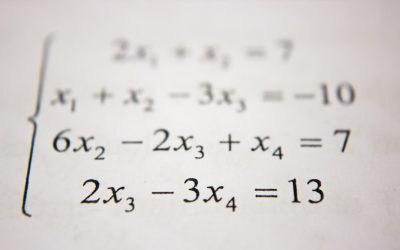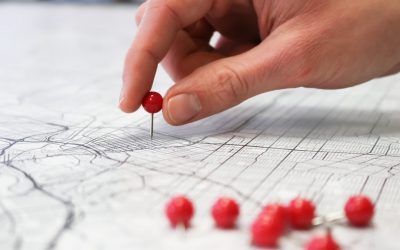Explore the World Through Geography, Natural Resources & Daily History
Clear, reliable and engaging guides that help you understand our planet — from UK geography education to global natural resources and On This Day history events.
Explore, discover, and learn about the wonders of our world! At Earth Site, we’re passionate about bringing geography, history, and science to life for curious minds of all ages. Whether you’re delving into historical events, uncovering the mysteries of the natural world, or seeking interactive resources, you’re in the right place.
Here, you can uncover the stories behind historical events, explore the natural wonders of our planet, and gain valuable insights into how the Earth’s systems shape our daily lives. From the towering peaks of mountain ranges to the far-reaching impacts of human innovation, we aim to make every topic both engaging and informative.
Start your journey of discovery with us today, and let’s make learning an adventure!
What We Cover
Earth Site brings together engaging and accessible educational content designed to help you understand the world, its history, and its natural systems.
🌍 Geography Education (UK & Worldwide)
We publish clear, easy-to-understand geography resources for students, teachers and curious learners. Our guides support geography education in the UK and cover physical geography, climate, ecosystems, population, and global development.
⛏️ Natural Resources & Environmental Geography
Explore detailed country profiles covering natural resources, mining, energy, geology and global environmental challenges. We show how nations manage minerals, water, land and ecosystems, and why these resources matter.
📅 On This Day in History
Every day has a story. Our On This Day history series features major events, anniversaries, traditions, and cultural milestones from around the world — with timelines, context, and fun facts.
TIMELINE
Mental Maths
Mental maths is the ability to perform calculations in your head without the use of any external tools, such as a calculator or pen and paper. It is an important skill to have as it allows individuals to solve problems quickly and efficiently. Mental maths is not only useful in academic settings, but also in everyday life. From budgeting and financial planning to time management and cooking, mental maths plays a crucial role in various aspects of our lives. Summary Mental maths is the ability to perform calculations in your head without the use of a calculator or written methods. It is important because it helps to improve problem-solving skills, boosts confidence, and enhances overall mathematical ability. Regular practice of mental maths can lead to improved memory, faster thinking, and increased accuracy. Mental maths can be applied to everyday situations such as calculating change, budgeting, and measuring ingredients in cooking. Children can benefit from mental maths strategies such as using visual aids and breaking down problems into smaller parts, while adults can use techniques such as estimation and approximation. What is Mental Maths and Why is it Important? Mental maths refers to the ability to perform calculations mentally, without the use of any external aids. It involves using mental strategies and techniques to solve mathematical problems quickly and accurately. Mental maths is important because it allows individuals to solve problems on the spot, without having to rely on external tools. It helps develop critical thinking skills, improves memory and concentration, and boosts confidence. Tips and Tricks for Improving Mental Maths Skills 1. Practice regularly: Like any other skill, mental...
Dividing by 10, 100 and 1000
Understanding division by 10, 100, and 1000 is an essential skill in mathematics. It allows us to divide numbers by powers of 10, which is a fundamental concept in arithmetic. This skill is not only important for solving mathematical problems but also for everyday life situations such as dividing money or measuring quantities. In this article, we will explore the basics of dividing by 10, 100, and 1000, as well as provide tips and tricks, mental math techniques, and real-life problem-solving examples. Summary Dividing by 10, 100 and 1000 involves moving digits to the right by one, two and three places respectively. To divide by 10, simply remove the last digit; to divide by 100, remove the last two digits; to divide by 1000, remove the last three digits. Mental maths can be used to quickly divide by 10, 100 and 1000 by visualising the movement of digits. When dividing decimal numbers, the decimal point must also be moved to the right by the same number of places as the digits. Dividing fractions, mixed numbers and real-life problems using division by 10, 100 and 1000 follow similar principles as whole numbers. Understanding the basics of dividing by 10, 100, and 1000 To understand division by 10, 100, and 1000, we first need to understand the concept of division itself. Division is the process of splitting a number into equal parts or groups. It is the inverse operation of multiplication. When we divide a number by 10, we are essentially splitting it into ten equal parts. Similarly, when we divide a number by 100, we are splitting it into one...
Multiplying by 10, 100 and 1000
Understanding how to multiply by 10, 100, and 1000 is a fundamental skill in mathematics. It allows us to quickly and efficiently perform calculations involving large numbers, decimals, and fractions. Whether you’re working with whole numbers, decimals, or fractions, knowing how to multiply by these powers of 10 is essential for solving problems in everyday life and in more advanced mathematical concepts. In this article, we will explore the concept of multiplying by 10, 100, and 1000, and provide step-by-step instructions and examples for each scenario. Summary Multiplying by 10, 100 and 1000 involves adding zeros to the end of a number. Place value is important when multiplying by 10, 100 and 1000 as each digit moves to a different place. To multiply whole numbers by 10, 100 and 1000, simply add the appropriate number of zeros to the end of the number. When multiplying decimals by 10, 100 and 1000, move the decimal point to the right by the appropriate number of places. To multiply fractions by 10, 100 and 1000, multiply the numerator by the appropriate number and keep the denominator the same. Understanding the Concept of Multiplying by 10, 100, and 1000 Multiplying by 10, 100, and 1000 involves increasing a number’s value by moving the digits to the left in the place value chart. When we multiply a number by 10, we move all the digits one place to the left. When we multiply by 100, we move all the digits two places to the left. And when we multiply by 1000, we move all the digits three places to the left. For example, if...
Written Division
Written division is a mathematical operation that involves dividing one number by another to find the quotient. It is an essential skill in mathematics and is used in various real-life situations, such as dividing a group of objects equally or calculating the cost per unit. Learning written division is important as it helps develop problem-solving skills, logical thinking, and numeracy. To understand written division, it is essential to be familiar with some basic terms and concepts. The dividend is the number being divided, while the divisor is the number by which the dividend is divided. The quotient is the result of the division, and the remainder is any amount left over after dividing as much as possible. For example, in the division problem 15 ÷ 3 = 5, 15 is the dividend, 3 is the divisor, 5 is the quotient, and there is no remainder. Summary Written division is a method of dividing numbers using a written algorithm. The four steps of written division are divide, multiply, subtract, and bring down. Tips for mastering written division include practicing regularly and breaking down problems into smaller parts. Common mistakes to avoid in written division include forgetting to carry over numbers and not double-checking your work. Written division can be used to solve real-world problems, such as dividing a group of items evenly among people. The Four Steps of Written Division: A Comprehensive Guide Performing written division involves following a set of steps to find the quotient and remainder. Here is a step-by-step guide on how to perform written division: Step 1: Divide– Start by dividing the first digit of the...
Division
Division is a fundamental operation in mathematics that involves splitting a quantity into equal parts. It is the inverse operation of multiplication and is used to find out how many times one number can be divided by another. Division is an essential skill that is used in everyday life, from dividing a pizza among friends to calculating the cost per unit of a product. Without division, it would be difficult to solve many real-life problems and make sense of numerical relationships. Summary Division is a mathematical concept that involves splitting a number into equal parts. It is a basic arithmetic operation that is used in everyday life, from sharing food to calculating budgets. Division plays a crucial role in problem-solving, helping us to find solutions to complex mathematical equations. There are different methods of division, including long division and short division, which can be used depending on the situation. Division is closely related to multiplication, with the two operations working together to solve mathematical problems. Division as a basic arithmetic operation Division is a basic arithmetic operation that allows us to distribute or allocate quantities equally. It involves dividing a dividend by a divisor to obtain a quotient. The dividend is the total quantity being divided, the divisor is the number by which the dividend is divided, and the quotient is the result of the division. For example, if we have 12 apples and want to divide them equally among 3 people, we would divide 12 by 3 to get a quotient of 4. This means each person would receive 4 apples. There are some basic division facts that...
Uncovering the allure of Platinum (Pt): Exploring the exceptional properties of this precious metal
Platinum, a lustrous and rare metal, has a rich history dating back thousands of years. It was first discovered by ancient Egyptians in the 7th century BC, who used it to create decorative objects and jewelry. However, it wasn’t until the 18th century that platinum gained recognition as a valuable metal. Today, platinum is highly regarded for its unique properties and is widely used in various industries, including catalysis, jewelry, healthcare, electronics, and more. Summary Platinum (Pt) is a rare and valuable metal that has been used for centuries in jewellery, medicine, and industry. Its distinctive physical and chemical properties make it an ideal catalyst for many chemical reactions, and it is widely used in the production of fertilisers, plastics, and other materials. Platinum (Pt) is also a popular choice for jewellery due to its durability, lustre, and rarity, and it is often used in engagement rings and other high-end pieces. Mining and extracting platinum (Pt) is a complex and expensive process, and it is primarily found in South Africa, Russia, and Canada. Platinum (Pt) has a range of applications in medicine and dentistry, including in chemotherapy drugs and dental implants, and it is also used in electronics and other modern technologies. Physical and Chemical Properties Platinum possesses several distinctive physical properties that make it highly sought after. It is a dense metal with a silvery-white color and a high melting point of 1,768 degrees Celsius. Platinum is also highly resistant to corrosion and tarnish, making it an ideal choice for jewelry and other applications where durability is essential. Chemically, platinum is known for its inertness and stability. It...
Written Multiplication
Written multiplication is a fundamental mathematical operation that involves multiplying two or more numbers together using a written method. It is an essential skill that is used in everyday life, from calculating prices and discounts to measuring ingredients for recipes. Understanding the basics of written multiplication is crucial for building a strong foundation in mathematics. Written multiplication is the process of multiplying numbers using a written method, such as the traditional vertical method or the lattice method. It involves understanding place value and the relationship between digits in order to accurately multiply numbers together. This skill is used in various mathematical operations, such as finding the area of a rectangle or solving algebraic equations. In everyday life, written multiplication is used in a wide range of situations. For example, when shopping, we often need to calculate the total cost of multiple items or determine the discounted price of an item. In cooking, we use multiplication to adjust recipes based on the number of servings we need. Understanding written multiplication allows us to solve these real-life problems efficiently and accurately. Summary Written multiplication is a fundamental concept in mathematics that involves multiplying numbers using a written method. Learning written multiplication is important for developing strong mathematical skills and problem-solving abilities. To master written multiplication, it is essential to follow a step-by-step guide and practice regularly. Tips and tricks such as breaking down numbers and using mental math can help make written multiplication more efficient. Common mistakes to avoid in written multiplication include forgetting to carry over digits and misplacing decimal points. The Importance of Learning Written Multiplication in Mathematics Written...
Multiplication
Multiplication is a fundamental mathematical operation that involves combining two or more numbers to find their total value. It is often represented by the symbol “x” or “*”, and the result of a multiplication operation is called the product. For example, multiplying 3 by 4 gives a product of 12. Basic multiplication facts are essential to understanding and solving more complex mathematical problems. These facts include the multiplication tables from 1 to 10, which are often memorized by students to improve their speed and accuracy in calculations. For example, knowing that 7 multiplied by 8 equals 56 can be useful in various situations, such as calculating the total cost of buying 8 items at a price of £7 each. Symbols and terminology used in multiplication include the multiplication sign “*”, which indicates that two or more numbers are being multiplied together. The numbers being multiplied are called factors, and the result is called the product. For example, in the equation 5 * 6 = 30, 5 and 6 are the factors, and 30 is the product. Summary Multiplication is the process of repeated addition and is a fundamental concept in mathematics. Memorizing multiplication tables can be made easier by using tricks such as skip counting and visual aids. Multiplication is used in everyday life, from calculating grocery bills to determining the area of a room. Division is the inverse operation of multiplication and can be used to solve problems involving equal sharing or grouping. Multiplication can be used to simplify complex calculations involving fractions, such as finding a common denominator. Mastering Multiplication Tables: Tips and Tricks Memorizing multiplication tables...
Written Adding and Subtracting
Written adding and subtracting are fundamental skills in mathematics that allow us to perform calculations with numbers. These skills involve the ability to add or subtract two or more numbers using a written method, such as using columns or lines. Learning these skills is important because they provide a foundation for more advanced mathematical concepts and problem-solving. Summary Written adding and subtracting involves using symbols and numbers to perform mathematical operations. Basic addition techniques include adding numbers from right to left and carrying over any excess digits. Basic subtraction techniques involve subtracting numbers from right to left and borrowing from the next digit if necessary. Regrouping and borrowing in addition and subtraction involve manipulating digits to perform more complex operations. Adding and subtracting with decimals and fractions require additional steps, such as aligning decimal points and finding common denominators. Word problems involving addition and subtraction require careful reading and interpretation of the problem. Mental math strategies for addition and subtraction include breaking numbers down into smaller parts and using known facts to simplify calculations. Common mistakes to avoid in written adding and subtracting include misaligning digits, forgetting to carry or borrow, and making errors in decimal or fraction calculations. Basic Addition Techniques To add numbers, follow these steps:1. Write the numbers in columns, aligning the digits according to their place value.2. Start adding the digits in the rightmost column (ones place) and write the sum below the line.3. If the sum is greater than 9, carry over the tens digit to the next column.4. Repeat steps 2 and 3 for each column, moving from right to left. For example,...
Australian History: History of Australia
Australia, known for its stunning landscapes and unique wildlife, has a rich and complex history that spans thousands of years. From the arrival of the Aboriginal Australians, the first inhabitants of the continent, to the British colonisation and the establishment of the Commonwealth of Australia, the country’s past has shaped its present and future. Understanding Australia’s history is crucial for appreciating its diverse culture, political system, and social dynamics. In this article, we will delve into the key events and turning points in Australian history, exploring their impact on the nation’s identity and development. Summary Aboriginal Australians were the first inhabitants of Australia, with a rich and diverse culture that dates back tens of thousands of years. Captain Cook’s arrival in 1770 marked the beginning of British colonisation, which would have a profound impact on the continent and its people. The Gold Rush of the 1850s was a turning point in Australian history, bringing wealth and prosperity but also social and political upheaval. The Eureka Stockade of 1854 is remembered as a symbol of Australian democracy, as miners rebelled against unfair working conditions and demanded greater representation. Federation in 1901 saw the birth of the Commonwealth of Australia, a new nation with its own constitution and government. Aboriginal Australians: The First Inhabitants of Australia Before the arrival of European settlers, Australia was home to a diverse range of Aboriginal cultures and languages. It is estimated that Aboriginal Australians have inhabited the continent for at least 65,000 years. These indigenous peoples had a deep connection to the land and lived in harmony with nature. They had complex social structures, rich...
Water Bodies Of Australia: Lakes, Rivers and Seas of Australia
Australia is home to a diverse range of water bodies, including rivers, lakes, seas, and oceans. These water bodies play a crucial role in the country’s ecosystem, supporting a wide variety of plant and animal life. They also provide important resources for various industries, such as tourism, agriculture, and maritime activities. In this article, we will explore some of Australia‘s most iconic water bodies and discuss their significance to the country. Summary Australia is home to a diverse range of water bodies, including rivers, lakes, seas, and oceans. The Great Barrier Reef is one of Australia’s most iconic natural wonders, known for its stunning coral formations and diverse marine life. The Murray River is the longest river in Australia, spanning over 2,500 kilometers and supporting a range of ecosystems and communities. Lake Eyre is Australia’s largest salt lake, located in the arid outback and known for its unique wildlife and stunning landscapes. The Tasman Sea separates Australia and New Zealand, and is an important shipping route and fishing ground for both countries. The Great Barrier Reef: Australia’s Iconic Coral Sea The Great Barrier Reef is one of Australia’s most famous natural wonders. Stretching over 2,300 kilometers along the Queensland coast, it is the largest coral reef system in the world. The reef is home to a vast array of marine life, including over 1,500 species of fish and 600 types of coral. The Great Barrier Reef is not only a natural wonder but also a major tourist attraction. It attracts millions of visitors each year who come to explore its vibrant coral gardens and swim with its diverse marine...
Iridium: The Rare and Resilient Element That Can Withstand Extreme Conditions
Iridium is a rare and resilient element that belongs to the platinum group of metals. It is known for its exceptional hardness, high melting point, and resistance to corrosion and oxidation. Iridium is one of the densest elements on Earth and has a beautiful silver-white color. It is named after the Greek word “iris,” which means rainbow, due to its ability to form a variety of colorful compounds. Iridium plays a crucial role in various industries due to its unique properties. It is used in electronics and technology, automotive manufacturing, medical applications, and even space exploration. Its rarity and resilience make it highly valuable and sought after. Summary Iridium is a rare and resilient element with unique properties. It has various applications in industries such as electronics, medicine, and automotive. Iridium plays a crucial role in space exploration and technology due to its resistance to extreme conditions. Iridium’s presence in the Earth’s geological history has helped scientists understand mass extinctions. Mining and extracting iridium is challenging due to its rarity and the need for specialized equipment. The Discovery and Properties of Iridium Iridium was discovered in 1803 by English chemist Smithson Tennant. He obtained it as a byproduct of his experiments with platinum ores. Tennant named the element “iridium” after the Latin word “iris,” which means rainbow, due to the variety of colors it can form when combined with other elements. Iridium is a dense metal with a density of 22.56 grams per cubic centimeter, making it one of the densest elements on Earth. It has a melting point of 2,447 degrees Celsius and a boiling point of 4,428...











